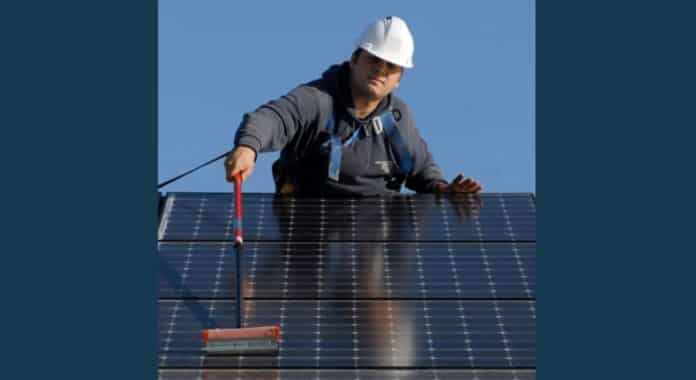
May 18 (UPI) — The International Energy Agency said Tuesday reducing fossil fuel use can help clear a path to net-zero carbon emissions by 2050.
The IEA, a Paris-based intergovernmental organization established in the wake of the 1973 oil crisis, announced the goal to cut fossil fuel use, including no new investment in fossil fuel supply, in a statement announcing its special report on the world’s first comprehensive study on transitioning to net-zero emissions by 2050.
The “roadmap” provides a “narrow” path to build a global energy sector with net-zero emissions by 2050 with rapid investment in renewable energy like solar and wind instead of fossil fuels since climate pledges alone are not enough to reach the zero emissions goal, the IEA said in the report.
“Our Roadmap shows the priority actions that are needed today to ensure the opportunity of net-zero emissions by 2050 — narrow but still achievable — is not lost,” IEA Executive Director Fatih Birol said in the statement. “The scale and speed of the efforts demanded by this critical and formidable goal — our best chance of tackling climate change and limiting global warming to 1.5 degrees Celsius — make this perhaps the greatest challenge humankind has ever faced.”
The transformation to clean energy would “create millions of new jobs,” and require “strong and credible policy actions from governments, underpinned by much greater international cooperation,” Birol added.
Cutting investment in new fossil fuel supply projects is among more than 400 milestones laid out in the report’s guide. The roadmap also calls for no further final investment decisions on new unabated coal plants. It also sets out a goal for no sales of new internal combustion engine passenger cars by 2035 and a 2040 goal for the global electricity sector reaching net-zero emissions.
It also calls for annual additions of solar PV to reach 630 gigawatts by 2030, and annual additions of wind power to reach 390 gigawatts by 2030, which together hit four times the record level set in 2020.
The IEA said that a push is also needed worldwide to advance technology to increase energy efficiency.
While most of the energy efficiency improvements to reduce CO2 emissions from now until 2030 will come from technologies readily available, by 2050 half of the reductions will come from technologies currently in the prototype phase, the report noted.
The roadmap for sustainability includes providing electricity to some 785 million people without access to it and clean cooking solutions to 2.6 billion people who lack them, which costs around $40 billion a year, equal to 1% of average annual energy sector investment, according to the IEA’s statement.
The same investment in electricity would also reduce indoor air pollution, “cutting the number of premature deaths by 2.5 million a year,” the IEA noted.
Total annual energy investment would surge to $5 trillion by 2030 to reach net-zero emissions, which would add 0.4 percentage points a year to global GDP growth, according to the a joint analysis with the International Monetary Fund.
By 2050, according to the IEA roadmap, almost 90% of electricity generation would come from renewable sources.
The report is designed to inform talks at the 26th Conference of the Parties of the United Nations Climate Change Framework Convention in Glasgow in November.





